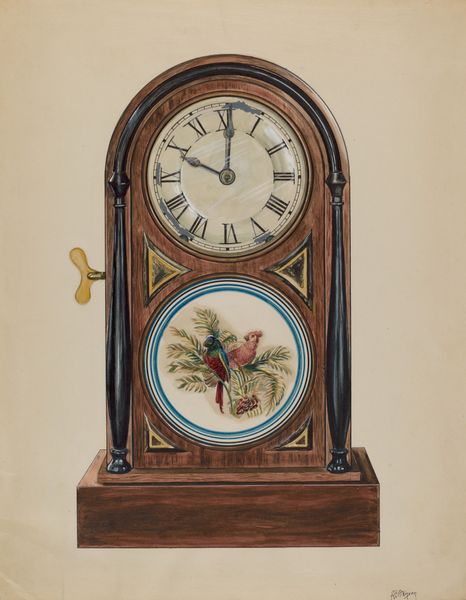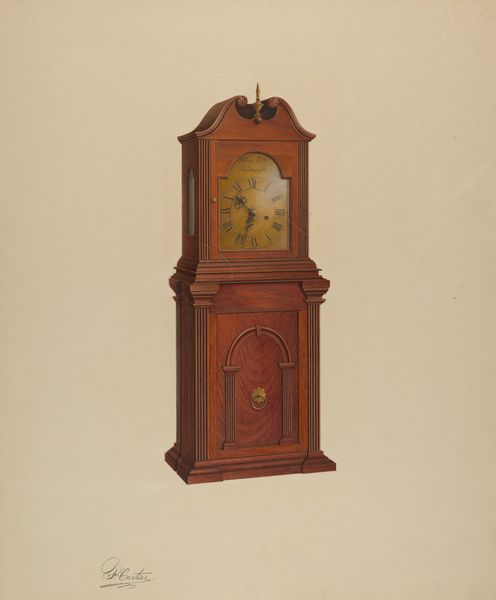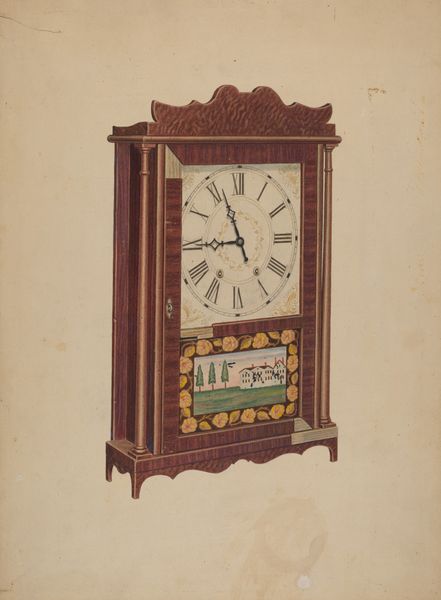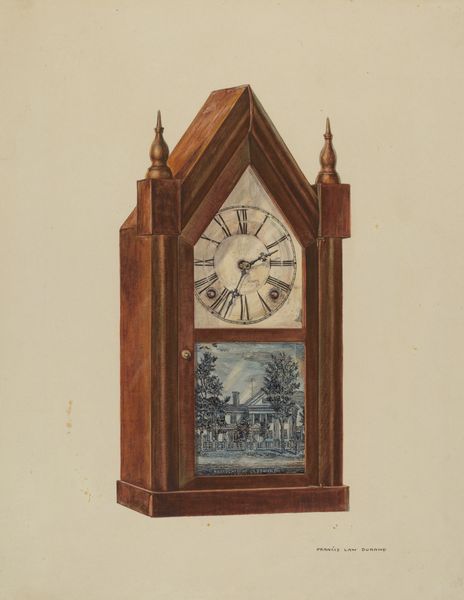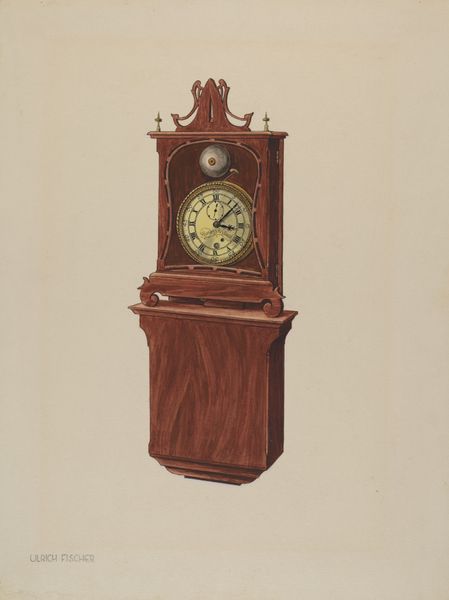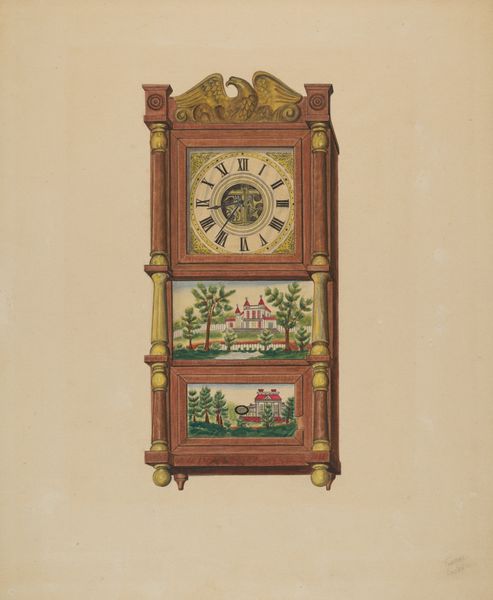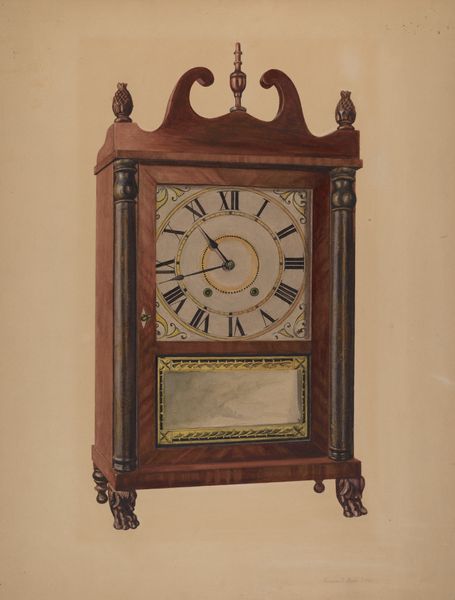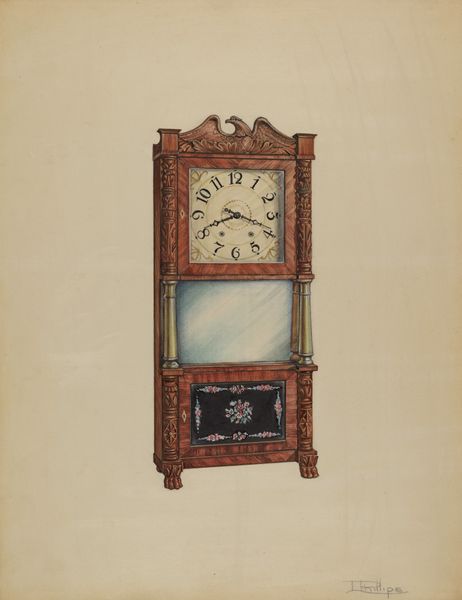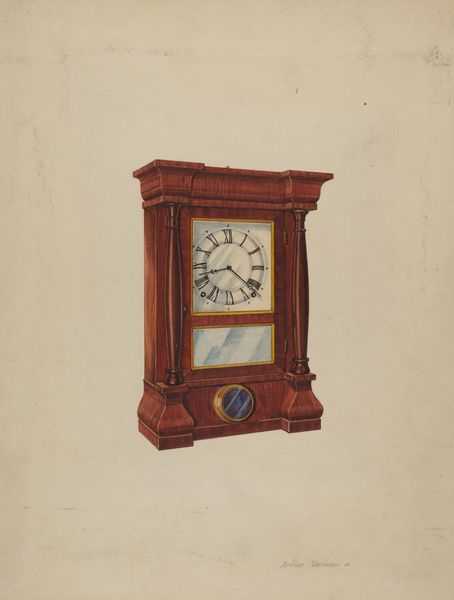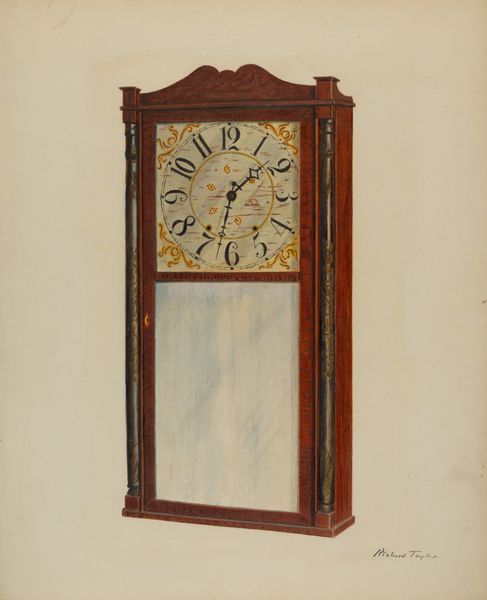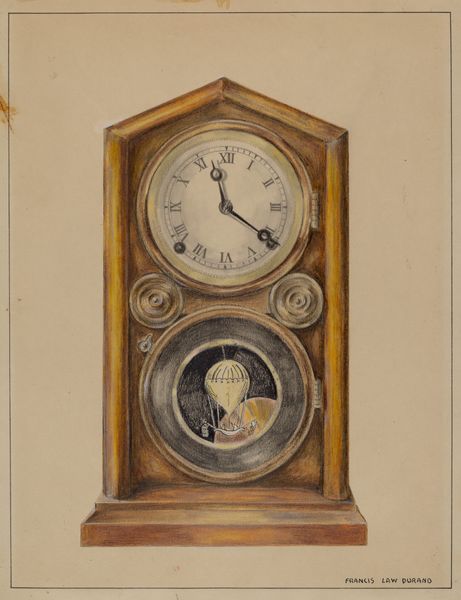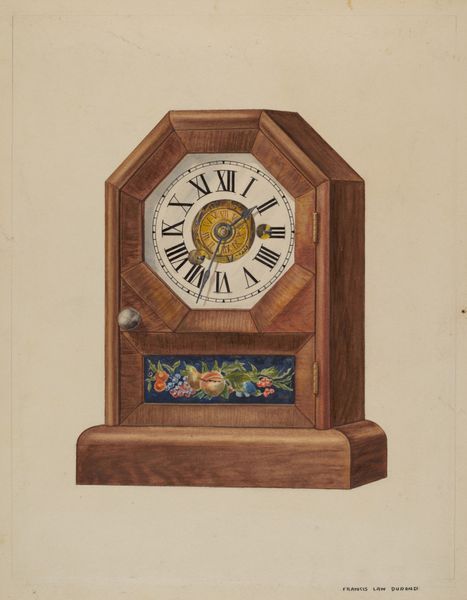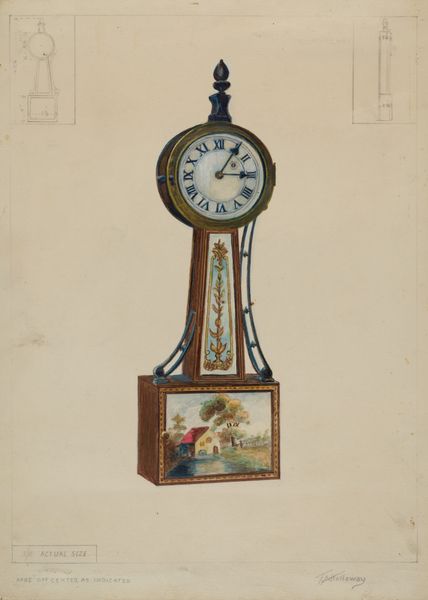
drawing, painting, watercolor
#
drawing
#
water colours
#
painting
#
oil painting
#
watercolor
#
watercolor
Dimensions: overall: 50.7 x 39.1 cm (19 15/16 x 15 3/8 in.) Original IAD Object: 27 1/2" high; 13 1/8"wide
Copyright: National Gallery of Art: CC0 1.0
Curator: This watercolour piece, dating from about 1939, is called "Shelf Clock" and is by Frank Wenger. It immediately strikes me with its stillness. There is a quiet formality about it, isn’t there? Editor: It does have that austere quality of much representational work. The material rendering is meticulously depicted and I would venture, not coincidently a rendering of its function and purpose as a consumer good. Curator: The clock, an instrument and indicator of production in the industrial age becomes more, the symbolic centrepiece, doesn't it? What stories could it tell us about labor, ownership and distribution during that time? I notice how the artist has used watercolor to really showcase the details of the clock’s surface, down to the reflections on the glass. Editor: Agreed. There's a real sense of attention to surface and sheen that hints at both the desire for and the materials employed, probably, in the wood-finishing process for furniture building during that period. Even more important for that time period as it’s on the cusp between the end of depression era policies toward work creation with that shift into wartime work policies around factories being employed differently or new industries like aeronautics blooming in that moment! Curator: The pastoral landscape is idyllic but in an unrealistic, sanitized manner; more in keeping with bourgeois aspirations than the harsh reality that ordinary folk lived under at the time of the great depression, eh? Editor: Absolutely. This contrast could almost read as commentary on the division between the leisure pursuits of those that controlled the hours versus that of those who worked within it or maybe this reflects the material fantasy that industry can and would become integrated into more holistic rhythms and relationship making. The gold flourishes are also a point where decoration seems poised between use value as embellishment in home space versus some degree to reflect that industrial materials could, in effect, give the working person more ability or social mobility. Curator: Perhaps Wenger sought to explore and reflect how the objects around us shape not just our routines, but our understanding of time and work within the socio-political frame! Editor: Indeed! Through art we observe that which defines us: art, as in artefact, the “made thing." The "Shelf Clock," it reveals production itself as part and parcel of its reception.
Comments
No comments
Be the first to comment and join the conversation on the ultimate creative platform.
